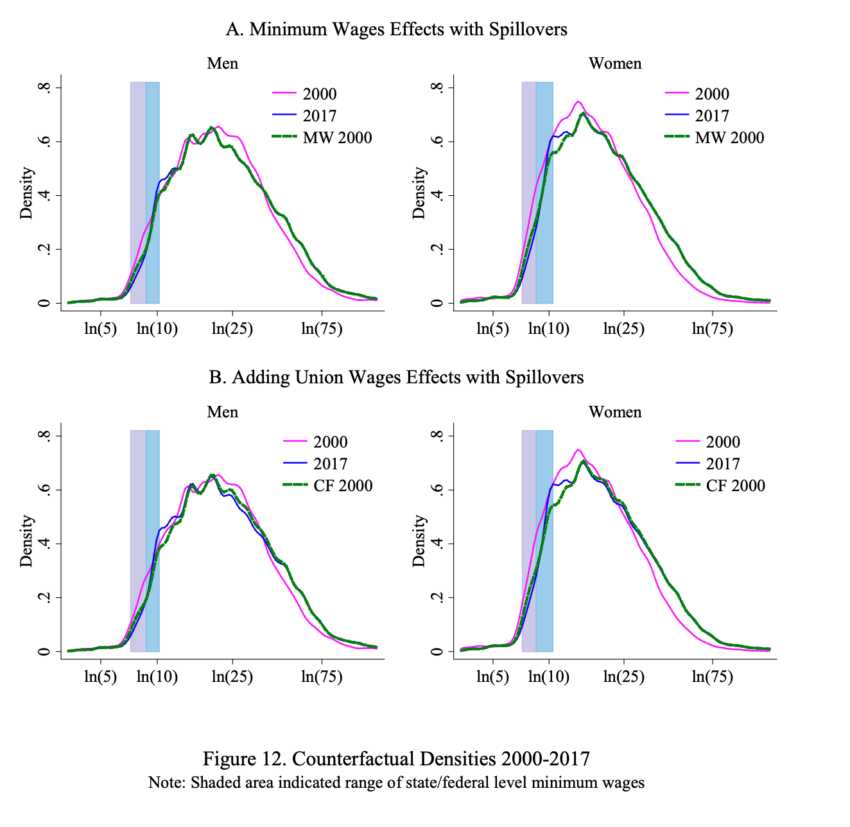and the decline in unionization rates is responsible for twice as much of the increase in inequality as previously believed. Declining real minimum wages also have had a larger effect on increased inequality than found in previous studies with older data.
That’s the takeaway from the first 30 minutes of today’s UO Economics seminar by Thomas Lemieux, 3:30-5:00 in 111 Lillis. This is the way Econ talks work – first they tell you the results, then they spend the rest of their 90 minutes explaining and defending the data and the empirical model they used to estimate them.
Labor Market Institutions and the Distribution of Wages: The Role of Spillover Effects
Nicole M. Fortin, Thomas Lemieux, and Neil Lloyd Vancouver School of Economics, University of British Columbia February 17, 2019
ABSTRACT: This paper extends the DiNardo, Fortin, and Lemieux (1996) study of the links between labor market institutions and wage inequality in the United States and updates the analysis to the 1979 to 2017 period. A notable extension quantifies the magnitude and shape of spillover effects from minimum wages and unions, providing multiple sources of evidence for the latter. A distribution regression framework is used to estimate both types of spillover effects separately and jointly.
Accounting for spillover effects doubles the contribution of de-unionization to the increase in male wage inequality, and raises the explanatory power of declining minimum wages to two thirds of the increase in inequality at the bottom end of the female wage distribution.

I dunno … the top and bottom figures look virtually identical to me. Whatever this means — it doesn’t look like five-sigma stuff!